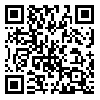BibTeX | RIS | EndNote | Medlars | ProCite | Reference Manager | RefWorks
Send citation to:
URL: http://ijpcp.iums.ac.ir/article-1-2055-en.html
2- Islamshahr Branch Islamic Azad University (IAU)
3- Alzahra University
Objectives : The present research was aimed to determine the clock drawing pattern in children with and without dyscalculia, and to assess Clock Drawing Test (CDT) as a screening measure in Iranian children population. Method: In current ex post facto study, 45 children with dyscalculia aged 9.5-11.7 years and 45 normal controls matched for age, gender, handedness, grades and IQ were selected through accessible sampling method. Participants were selected after completing the teacher’s and parent's form of Children Symptom Inventory (CSI), Wechsler Intelligence Scale for Children (WISC-R), Iran Keymath Mathematic Test (IKMT) and semi-structure interview according to American Psychiatric Association (DSM-IV-TR). Hereafter, CDT was administered . Conceptualization of time and construction of the clock face drawing were assessed separately using Cohen and colleagues scoring system. Data were analyzed using multivariate analysis of variance . Results: The performance of children with dyscalculia was poorer than the normal children. The qualitative analysis of performance revealed errors that were subsequent to poor planning during execution of coordinative tasks. Conclusion: According to quantitative and qualitative analyses and the difference between clock drawing pattern in children with and without dyscalculia, the clock drawing test is a suitable screening measure, and a useful addition to comprehensive neuropsychological evaluation in Iranian children with dyscalculia.
Received: 2014/01/12 | Accepted: 2014/01/12 | Published: 2014/01/12
| Rights and permissions | |
 |
This work is licensed under a Creative Commons Attribution-NonCommercial 4.0 International License. |



